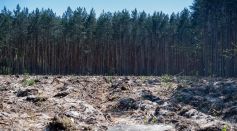ENVIRONMENT & CLIMATE

Can We Bring Back Extinct Animals? How De-Extinction Science and Technology Work

Extreme Heatwaves Explained: What Extreme Heat Science Reveals About Our Changing Climate

Photosynthesis Made Easy: Light Reactions, Calvin Cycle, and Everyday Examples

Global Biodiversity Crisis: Urgent Warning as Species Extinction Causes Accelerate Worldwide

Biodiversity: What It Is, Why It Matters, and How It's Measured

Lightning Strikes Are Rising Worldwide: How Science Links Charged Storms to Global Warming Effects

Can Scientists Predict Earthquakes? The Latest Advances in Seismic Forecasting Explained

What Happens Beneath a Volcano Before an Eruption? Magma Movement and Geologic Hazards Explained

The Strongest Tornadoes Ever Recorded: Scientific Breakdown of Extreme Tornado Events

Deadliest Natural Disasters in History: The Science Behind Historic Catastrophes and Their Causes

How Close Are We to Real De-Extinction? Current Progress and Challenges of Gene Editing

Why Animals Migrate Thousands of Miles: The Science Behind Ecological Behavior

How Animal Senses Work: Vision, Smell, Echolocation, and Other Hidden Abilities

Deforestation and Biodiversity Loss: How Habitat Destruction Is Disrupting Ecosystem Balance
Most Popular

Can Scientists Predict Earthquakes? The Latest Advances in Seismic Forecasting Explained

Photosynthesis Made Easy: Light Reactions, Calvin Cycle, and Everyday Examples

What Black Holes Really Do to Space and Time: Black Hole Science and Spacetime Distortion

Biodiversity: What It Is, Why It Matters, and How It's Measured





